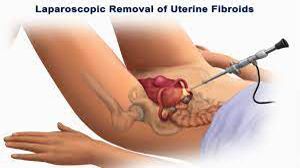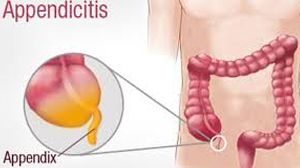Laparoscopic Hysterectomy with Ureteral Stent Placement for Optimal Patient Care
Add to
Share
2,250 views
Report
1 year ago
Description
Introduction: Laparoscopic hysterectomy is a minimally invasive surgical procedure performed to remove the uterus, offering numerous benefits such as reduced postoperative pain, faster recovery, and minimal scarring. In certain cases, the presence of ureteral complications necessitates the additional step of ureteral stent placement during laparoscopic hysterectomy. This essay explores the importance of this combined approach, highlighting the enhanced precision and safety it provides for optimal patient care. Understanding Laparoscopic Hysterectomy with Ureteral Stent Placement: Laparoscopic hysterectomy involves the removal of the uterus through small incisions, guided by a laparoscope and specialized surgical instruments. When there is a risk of ureteral injury, such as in cases involving adhesions, endometriosis, or fibroids, the placement of a ureteral stent becomes necessary. The stent acts as a temporary tube that facilitates the passage of urine and helps prevent ureteral complications during the procedure. Benefits of Combined Approach: The combination of laparoscopic hysterectomy with ureteral stent placement offers several advantages: Enhanced precision: Ureteral stent placement provides surgeons with a clear landmark for identifying and avoiding the ureters during the hysterectomy. This reduces the risk of unintentional injury to these delicate structures, promoting greater surgical precision. Safety optimization: By ensuring proper urine flow and preventing ureteral injury, the placement of a ureteral stent enhances patient safety during the laparoscopic hysterectomy. It minimizes the potential for postoperative complications such as ureteral strictures, leakage, or obstruction. Preventive measure: Ureteral stents serve as a preventive measure, particularly in cases with identified or suspected ureteral involvement. They offer temporary protection to the ureters, allowing the surgeon to perform the hysterectomy with confidence, knowing that the risk of ureteral complications is minimized. Improved patient outcomes: The combined approach of laparoscopic hysterectomy with ureteral stent placement promotes optimal patient care. It reduces the likelihood of postoperative ureteral complications, which can lead to prolonged hospital stays, additional procedures, and potential long-term sequelae. Laparoscopic hysterectomy, a minimally invasive procedure for removing the uterus, can be further enhanced by incorporating ureteral stent placement. This description explores the significance of combining these techniques, emphasizing the benefits they offer in terms of precision and safety, ultimately leading to optimal patient care. Laparoscopic hysterectomy involves the use of small incisions and specialized instruments to remove the uterus. In certain cases, such as those involving adhesions, endometriosis, or fibroids, the presence of ureteral complications necessitates the placement of a ureteral stent during the procedure. The stent acts as a temporary tube to ensure proper urine flow and prevent injury to the ureters. The combined approach of laparoscopic hysterectomy with ureteral stent placement provides several advantages. First, it enhances surgical precision by providing clear landmarks and guidance for avoiding ureteral injury during the procedure. This reduces the risk of unintended harm to the delicate ureter structures. Additionally, the placement of a ureteral stent optimizes patient safety by minimizing the potential for postoperative complications such as strictures, leakage, or obstruction. The stent serves as a preventive measure, offering temporary protection to the ureters during the hysterectomy. By employing laparoscopic hysterectomy with ureteral stent placement, surgeons can improve patient outcomes. This approach reduces the likelihood of postoperative ureteral complications, which can result in extended hospital stays, additional procedures, and long-term issues. Patients benefit from enhanced safety, faster recovery, and overall satisfaction with their surgical experience. In summary, the combination of laparoscopic hysterectomy with ureteral stent placement brings enhanced precision and safety to the surgical procedure. This technique reduces the risk of ureteral injury, promotes optimal patient care, and minimizes postoperative complications. The placement of a ureteral stent serves as a preventive measure, ensuring smooth urine flow and protecting the ureters during the hysterectomy. By adopting this combined approach, surgeons can offer patients the benefits of a minimally invasive procedure while prioritizing their well-being and successful outcomes. Conclusion: Laparoscopic hysterectomy with ureteral stent placement is a valuable technique that ensures enhanced precision and safety during the surgical procedure. By employing this combined approach, surgeons can optimize patient care, reducing the risk of ureteral injury and subsequent complications. The placement of a ureteral stent serves as a preventive measure, allowing for a more confident and precise hysterectomy. Ultimately, this approach contributes to improved patient outcomes, faster recovery, and enhanced overall satisfaction with the surgical experience.
Similar Videos






